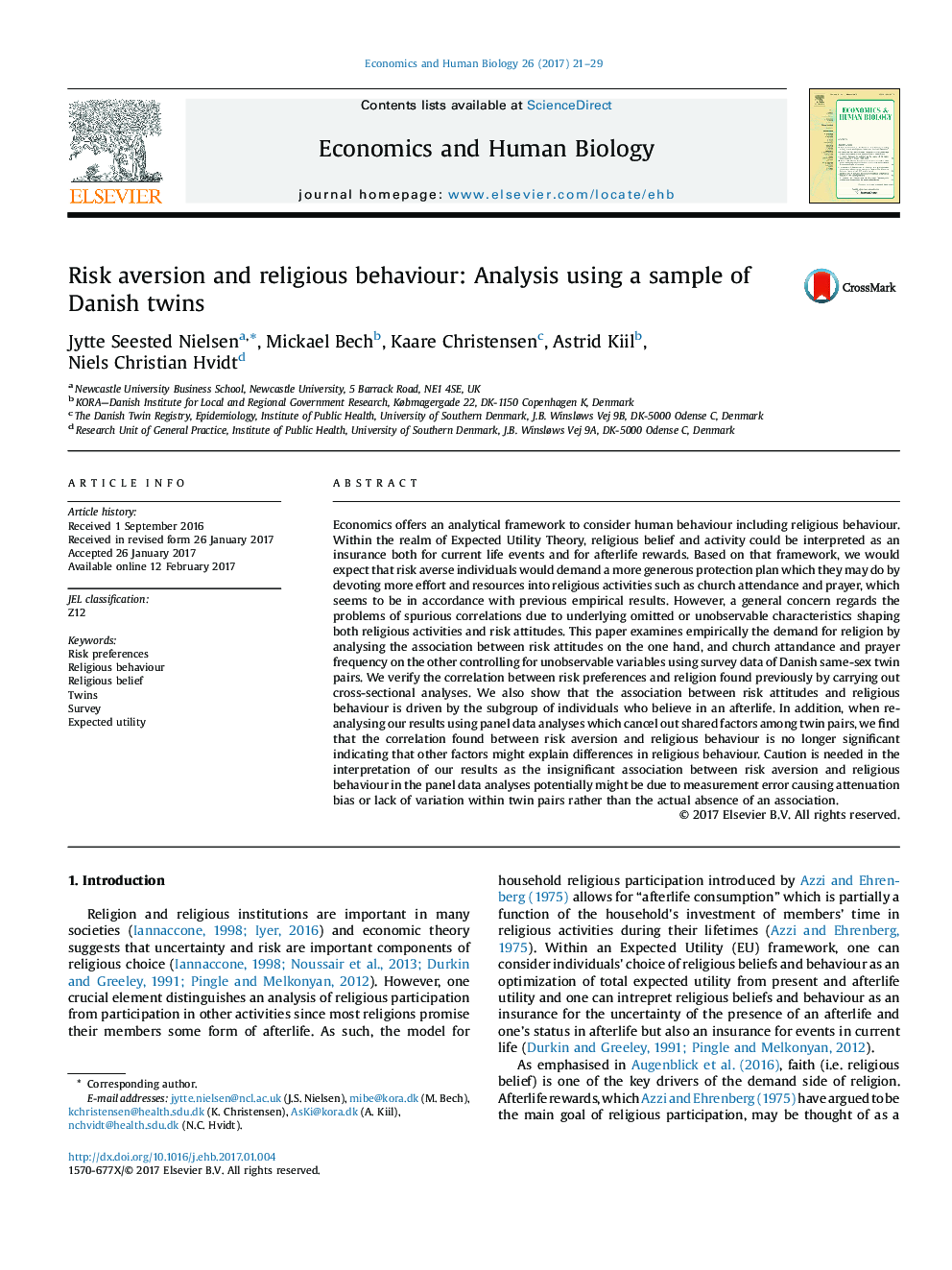| کد مقاله | کد نشریه | سال انتشار | مقاله انگلیسی | نسخه تمام متن |
|---|---|---|---|---|
| 5056804 | 1476553 | 2017 | 9 صفحه PDF | دانلود رایگان |
- The aim is to examine association between risk attitudes and religious behaviour.
- The study exploits survey data of Danish same-sex twin pairs.
- We find a correlation between risk preferences and religion.
- The association is driven by the respondents who believe in an afterlife.
- Using panel models, we find that the correlation might be of a spurious nature.
Economics offers an analytical framework to consider human behaviour including religious behaviour. Within the realm of Expected Utility Theory, religious belief and activity could be interpreted as an insurance both for current life events and for afterlife rewards. Based on that framework, we would expect that risk averse individuals would demand a more generous protection plan which they may do by devoting more effort and resources into religious activities such as church attendance and prayer, which seems to be in accordance with previous empirical results. However, a general concern regards the problems of spurious correlations due to underlying omitted or unobservable characteristics shaping both religious activities and risk attitudes. This paper examines empirically the demand for religion by analysing the association between risk attitudes on the one hand, and church attandance and prayer frequency on the other controlling for unobservable variables using survey data of Danish same-sex twin pairs. We verify the correlation between risk preferences and religion found previously by carrying out cross-sectional analyses. We also show that the association between risk attitudes and religious behaviour is driven by the subgroup of individuals who believe in an afterlife. In addition, when re-analysing our results using panel data analyses which cancel out shared factors among twin pairs, we find that the correlation found between risk aversion and religious behaviour is no longer significant indicating that other factors might explain differences in religious behaviour. Caution is needed in the interpretation of our results as the insignificant association between risk aversion and religious behaviour in the panel data analyses potentially might be due to measurement error causing attenuation bias or lack of variation within twin pairs rather than the actual absence of an association.
Journal: Economics & Human Biology - Volume 26, August 2017, Pages 21-29
